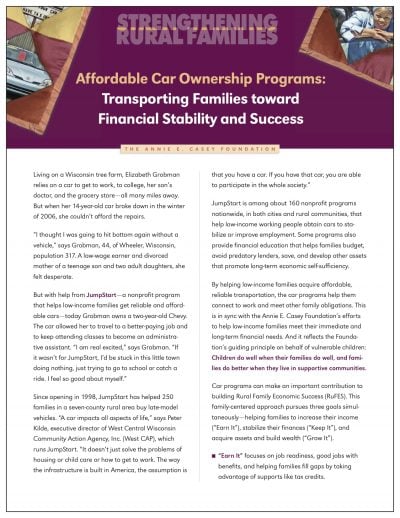Rural Assets
The family-centered approach of these programs is part of building Rural Family Economic Success (RuFES), which helps families earn, keep and grow their assets and wealth.

In today's world, it's nearly impossible to support a family without having reliable transportation. This is particularly true in rural areas, where families need to commute for work, but also access to necessities such as groceries and medical care. There are limited or no options for cars for low-income families to acquire a reliable vehicle through conventional loans and methods, and resort to predatory lenders. These transactions subject low-income car buyers to high prices, high interest rates and ultimately, a situation that puts them further in the hole.
To help, nearly 160 low income car programs have emerged across the nation to help secure reliable vehicles and prices and interest rates low-income families are able to afford. There are different types of programs to help get a car across the country, but they are all collaborating to share ideas and practices, all while striving to generate more public awareness to spur supportive public policy. Other publications on this topic include On the Road and Shifting into Gear.
About 40% of rural counties have no public transit service. Even in urban areas, having a family typically necessitates having reliable transportation. 25% of families earning $25,000 or less don’t have a car. These families often do not qualify for conventional loans and are forced to turn toward predatory lenders.